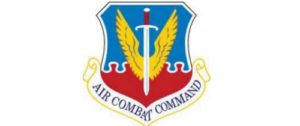Crew error and datalink issues caused an MQ-1B to crash Feb. 2, 2016, in the U.S. Central Command area of responsibility, according to an Air Combat Command Abbreviated Accident Investigation Board report just released.
The MQ-1B was assigned to the 432nd Wing at Creech Air Force Base, Nevada, and operated by a launch and recovery element from the 414th Expeditionary Reconnaissance Squadron at a deployed location in the AOR. The remotely piloted aircraft (RPA) was conducting a combat support mission at the time of the incident.
The board president found by a preponderance of the evidence the cause of the mishap was the failure to execute the checklist procedure for a loss of usable C-band downlink above 2,000 Feet AGL, leading to ill-informed control inputs and a subsequent unrecoverable departure from controlled flight. The board president also indicated the underperforming turbocharger of the RPA was a distraction for the pilot and sensor operator, which substantially contributed to the failure to follow checklist procedures.
The underperforming turbocharger was identified during the flight, leading to the decision for the RPA to return to base. During the descent, the launch and recovery element experienced degraded video and telemetry, indicative of a degraded C-band datalink. This led to the heads up display information to be unreliable to make informed control inputs to the RPA. The pilot and sensor operator continued to enter commands, but caused the RPA to execute a left yaw and roll, which resulted in a departure from controlled flight. The RPA entered into an unrecoverable spin leading to the crash.
The estimated cost of the aircraft and its munitions was $4.1 million.
The full report is available here.
Source: USAF


Additional Factors that seem to be undervalued in this investigation,
1. Violation of Sterile Cockpit rules by additional crew, asking to power up a GCD in close proximity to the MRPA systems. If this did not directly result in degradation of downlink portion of the BAND C Telemetry link, it still added an additional distraction and even if it had nothing to do with the loss of said link, (and I have my doubts…) it provided a red herring to chase for the MP to worry about. Additionally the MP does not seem to have confessed the seriousness of the issue and resulted in the unidentified crewman interrupting the MP’s train of thought and problem solving ability.
2. If problems occurred at the initiation of Landing Configuration, why wasn’t a return to Cruise or any other configuration that allowed the MRPA to handle the flying while the crew sorted out the Band C issues?
3. If the MRPA did not initiate the planned emergency mission as it is designed to do, and subsequently testing the systems say there was no flaw found, one has to believe the MRPA thought that it had a valid link…. Please refer to the reference of the unidentified crewman who powered up a Second GDC….. Is it possible the second GDC’s signal strength buried the weak return transmission from the MRPA?
4. There is no indication of any examination of the second GDC to rule out this factor as a problem, or that it was not at the time mis-configured or malfunctioning….
5. While the Planned emergency mission route would have flown over inhabited regions, and the MP made a judgement call NOT to overfly such an area with an aircraft in a degraded condition, all indications seemed to indicate the MRPA was capable of climbing to a safe altitude, and executing said mission. In fact even with the degraded performance, a sustained climb rate in excess of 600fpm was demonstrated minutes before and that was at an altitude 4000 feet higher than it was now.
Again, we can arm chair quarterback this to death but in the end, It is the pilots call, he does not know what is for sure causing the degraded performance, or that it will not degrade further with time, and his eagerness to get the bird on the ground is commendable if in this case possibly misguided.
However, every pilot knows that the most basic tenant in any emergency procedure is “Fly the Aircraft first” because without that, nothing else you do is going to help. In this case, it would seem that the MP failed to recognize the fact his bird was in or at least approaching a stall, and tried to fly it out instead of relinquishing control to the MRPA.
Trying to fly with degraded telemetry and video is like trying to drive while “under the IFR hood” and being handed Polaroid photos of what is going on in front of you. By the time you get an idea of the RPA’s attitude and airspeed, several seconds may have elapsed, which can be an eternity in the cockpit, or the GCS…
Just my 2 cents.